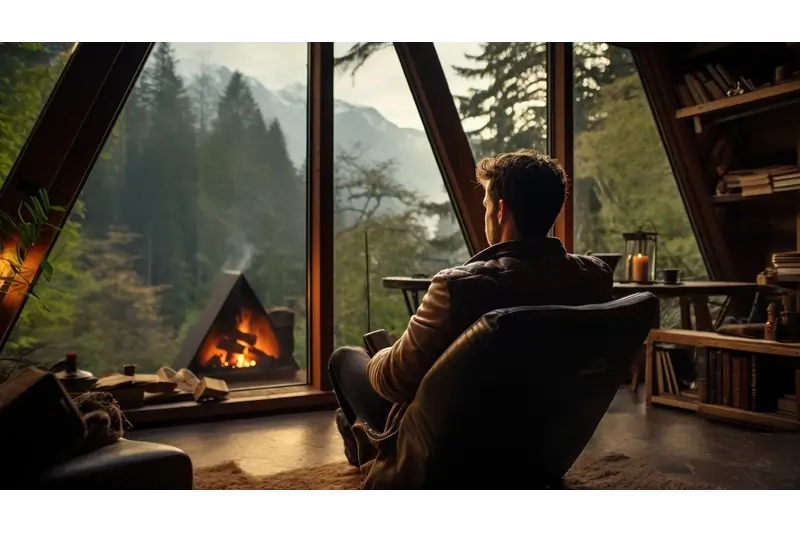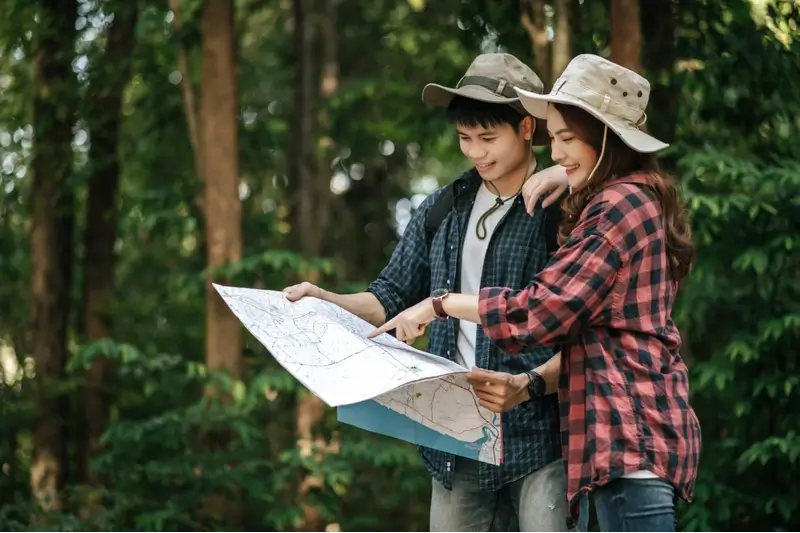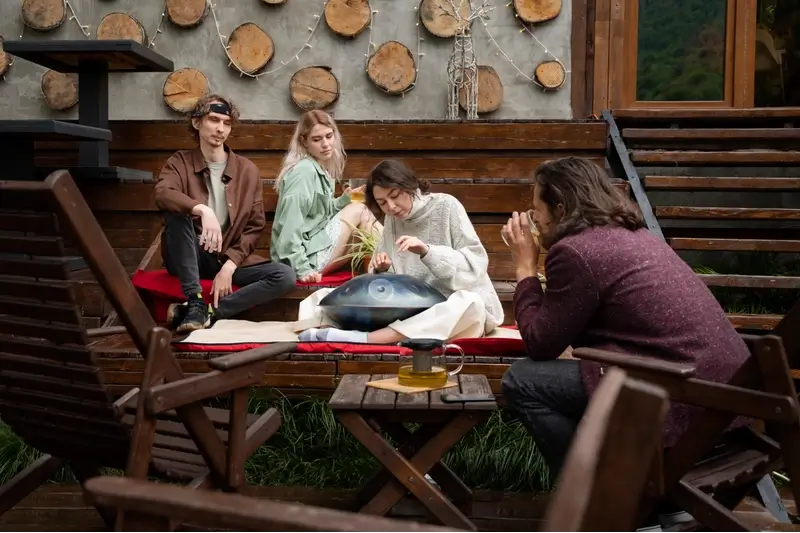A forest cabin vacation offers peace and a chance to connect with nature. It’s a perfect escape from the busy city life.
Hey friends, let’s dive into planning a forest cabin vacation. I’ve taken dozens of these trips over the years, from solo escapes in the Rockies to family getaways in the Pacific Northwest. Each one taught me something new about blending comfort with wilderness adventure. Today, I’m sharing my experiences like we’re chatting over coffee, so you can skip the rookie mistakes and focus on the magic.
Picking the Perfect Spot
First off, choosing where to go sets the tone for everything. I always start by thinking about what kind of vibe I want. Do I crave deep isolation or something closer to trails and towns? Once, I booked a spot in Shawnee National Forest without checking reviews, and it turned out to be too remote for my group’s comfort level. Lesson learned: dig into online forums and sites like Airbnb or VRBO.
Look at seasons too. Summer brings bugs and crowds, while fall offers crisp air and fewer people. I check weather patterns on apps like AccuWeather. Accessibility matters a lot. Is the road drivable in your car, or do you need four-wheel drive? In winter, snow chains saved me more than once in the mountains.
Read guest stories on Reddit threads or blog comments. They reveal hidden gems or red flags, like spotty cell service. I aim for places with natural features nearby, such as lakes or hiking paths. This way, the location enhances daily explorations without extra travel.
Finally, budget plays in. Luxury cabins with hot tubs cost more but add that extra coziness. I compare options on multiple platforms to snag deals. Trust me, the right spot makes all the difference in creating those unforgettable moments.

Booking Your Dream Cabin
Once the location clicks, it’s time to nail down the cabin itself. I’ve stayed in everything from rustic shacks to upscale lodges. Start by listing must-haves. For me, a wood-burning stove is non-negotiable for those chilly evenings. Check if the place has a full kitchen—I love whipping up simple meals without running to stores.
Amenities vary wildly. Some spots offer Wi-Fi, others force you to unplug, which can be a blessing. I scan for extras like outdoor grills or board games. Photos help visualize, but reviews seal the deal. Look for mentions of cleanliness, noise levels, and host responsiveness.
Timing your booking is key. Weekdays often mean lower rates and more solitude. I once grabbed a last-minute deal in Southern Illinois through a local rental site. Avoid peak holidays unless you book months ahead. Platforms like Getaway.house simplify things for beginners with standardized setups.
Don’t overlook policies. Pet-friendly? Cancellation terms? I always email the host with questions. This step avoids surprises and builds excitement. A well-booked cabin feels like home base for your adventures.
Packing Like a Pro
Packing smart turns potential headaches into smooth sailing. I’ve refined my list over trips, drawing from mountain retreats and lakeside stays. Start with weather in mind. Layers are essential—think tank tops, flannels, sweatshirts, and waterproof jackets. I pack sturdy hiking boots for trails and comfy sandals for cabin lounging.
For gear, a backpack is my go-to for day hikes. Include a flashlight with extra batteries, multi-tool, and reusable water bottle. Insect repellent and sunscreen are musts, especially in summer. I add a power bank for charging, since power can be spotty. Warm socks and hats handle cool nights.
Food packing keeps things fun. I bring meal kits for easy stews or veggie burgers. Charcuterie items like cheeses, crackers, fruits, and nuts make great snacks. Don’t forget s’mores fixings—graham crackers, chocolate, and marshmallows. Beverages? Coffee, hot chocolate, and local beers. Pack in airtight containers to deter critters.
Personal care covers basics. Toiletries, medications, and a small first-aid kit with bandages, pain relievers, and antiseptics. For wildlife areas, include bear spray or a snake bite kit if needed. Entertainment like books or puzzles fills rainy days. This approach keeps me prepared without overpacking.
Planning Your Adventures
Activities bring the forest to life. I’ve hiked countless trails, and planning ahead maximizes fun. Research maps on apps like AllTrails. Pack water, snacks, and good shoes. I start early to catch wildlife at dawn. One trip, a short loop led to stunning waterfalls—pure joy.
Wildlife watching is a highlight. Bring binoculars and stay quiet. Early mornings or late afternoons work best. Keep distance from animals; I’ve spotted deer and birds this way. Fishing or kayaking adds thrill if near water. Check local permits first.
Indoor options matter too. Board games or card decks spark laughter on stormy days. I plan picnics with cabin-made lunches. Star-gazing from the deck is magical with minimal light pollution. Mix structured outings with downtime for balance.
Group dynamics influence choices. With friends, we rotate ideas like nature walks or campfire stories. Solo? I journal or meditate. Tailor to your crew, and the days flow naturally.

Staying Safe in the Wild
Safety isn’t glamorous, but it’s crucial. I’ve faced unexpected situations, like sudden storms, so preparation pays off. Pack a first-aid kit with essentials: bandages, tweezers, and medications. Know the nearest hospital and share your itinerary with someone back home.
Wildlife encounters require respect. Observe from afar, never feed animals. Secure food in bear-proof containers if in bear country. I carry pepper spray and learn local behaviors via park websites. In snake areas, wear boots and watch your step.
Emergency readiness includes a charged phone and backup charger. No signal? Satellite phones or apps like what3words help. I check road conditions before driving, especially in winter. Fire safety: Use designated pits and fully extinguish flames.
Health tips round it out. Stay hydrated, use sun protection, and pace activities. These habits let me enjoy without worry.
Embracing Relaxation
A forest cabin vacation shines in downtime. I’ve learned to unplug fully. Start with deep breaths amid the trees. Meditation apps guide me, but nature’s sounds often suffice. A hammock nap recharges like nothing else.
Cozy evenings by the fire are my favorite. Sip hot cocoa, read a book, or chat with companions. No rush—just presence. I practice hygge with warm blankets and soft lighting. It fosters deeper connections.
Outdoor relaxation works too. Gentle walks or birdwatching soothe the soul. Picnics by streams invite mindfulness. Disconnecting from devices amplifies this. My trips refresh me profoundly through these simple joys.
Balance activity with rest. Over-scheduling defeats the purpose. Let the forest’s rhythm guide you.

Capturing the Moments
Memories fade, but captures preserve them. I’ve snapped countless photos on these trips. Use natural light for best shots—golden hour is prime. Avoid flash to keep authenticity. Candid moments of laughter or scenery tell the story.
Journaling adds depth. I note daily highlights, senses engaged, and reflections. Sketches or pressed leaves enhance entries. It turns experiences into tangible keepsakes.
Tech helps too. Download apps for editing photos or tracking hikes. But don’t overdo screens—balance is key. Sharing later with friends extends the joy.
These methods let me relive the magic long after.
Going Green
Sustainability keeps these spots pristine. I’ve adopted leave-no-trace principles. Pack out trash, stay on trails, and minimize impact. One forgetful moment taught me: always double-check.
Eco-products make a difference. Reusable bottles cut plastic waste. Bamboo utensils and biodegradable soaps are easy swaps. Solar chargers keep devices powered without outlets.
Respect wildlife habitats. Avoid disturbing plants or animals. Choose cabins with green practices, like composting. Small actions preserve for future trips.
This mindset enriches the experience, connecting deeper with nature.

More Ways to Enjoy
Beyond basics, unique twists elevate trips. Try forest bathing—immersive walks for stress relief. I’ve felt rejuvenated after sessions in dense woods.
Cooking experiments add fun. Forage safe edibles if knowledgeable, or stick to packed ingredients. Themed nights, like storytelling around the fire, build bonds.
Wellness activities fit well. Yoga on the deck or herbal teas from local plants. Adapt to your interests for personalized bliss.
These extras turn good trips into legendary ones.
Handling Challenges
Not every moment is perfect. I’ve dealt with rain-soaked plans. Have backups like indoor games or puzzles. Bugs? Repellent and nets help.
Loneliness in solo trips? Journal or call home briefly. Mechanical issues? Pack tools and know basics. Flexibility turns setbacks into stories.
Preparation minimizes issues, letting fun dominate.
Sharing the Experience
Back home, sharing amplifies joy. I post photos sparingly, focusing on personal tales. Host gatherings to recount adventures. It inspires others.
Gifting mementos, like pressed flowers, spreads the vibe. Reflecting solidifies lessons learned.
This closure completes the cycle.
Frequently Asked Questions
What activities can I do during a forest cabin vacation?
Hiking, wildlife watching, fishing, picnics, and stargazing top the list. Indoor options include reading or games. Tailor to your location and group.
What should I pack for a log cabin stay?
Essentials include layered clothes, sturdy shoes, food, first-aid kit, flashlight, and insect repellent. Add entertainment like books for downtime.
Why do people love cabin getaways?
They offer escape from daily hustle, connection to nature, and relaxation. The simplicity fosters mindfulness and bonds with loved ones.
How do I prepare for no electricity?
Pack candles, flashlights, power banks, and matches. Check if the cabin uses solar or generators. Embrace the unplug for true recharge.
What if it rains during my trip?
Have indoor activities ready, like puzzles or cooking. Waterproof gear lets you venture out. Rain adds cozy ambiance inside.
Is a forest cabin vacation safe for families?
Yes, with preparation. Choose kid-friendly spots, pack safety items, and teach wildlife respect. Supervise outdoor play.
How can I make it eco-friendly?
Use reusables, leave no trace, and choose green products. Support sustainable cabins to minimize impact.
Wrapping It Up
Reflecting on my forest cabin vacation journeys, they always leave me refreshed and inspired. From picking spots to packing wisely, each step builds toward serenity. I’ve shared these tips from my adventures, hoping they spark your own. Grab your gear, book that cabin, and immerse in nature’s embrace. You won’t regret it—happy trails, friends!



